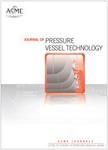版权所有:内蒙古大学图书馆 技术提供:维普资讯• 智图
内蒙古自治区呼和浩特市赛罕区大学西街235号 邮编: 010021

作者机构:REPSOL YPF Direcc Tecn Refino & Logist Buenos Aires DF Argentina UNLP Fac Ingn LEICI Buenos Aires DF Argentina Enbridge Pipelines Inc Edmonton AB T5J 3N7 Canada
出 版 物:《JOURNAL OF PRESSURE VESSEL TECHNOLOGY-TRANSACTIONS OF THE ASME》 (美国机械工程师学会汇刊:压力容器技术杂志)
年 卷 期:2009年第131卷第2期
页 面:021701-1-021701-7页
核心收录:
学科分类:08[工学] 0807[工学-动力工程及工程热物理] 0802[工学-机械工程]
主 题:computerised monitoring leak detection pipelines production engineering computing recursive estimation regression analysis
摘 要:The use of statistical tools to improve the decision process within leak detection is becoming a common practice in the area of computer pipeline monitoring. Among these tools, the sequential probability ratio test is one of the most named techniques used by commercial leak detection systems (Zhang and Di Mauro, 1998, Implementing a Reliable Leak Detection System on a Crude Oil Pipeline, Advances in Pipeline Technology, Dubai, UAE). This decision mechanism is based on the comparison of the estimated probabilities of leak or no leak observed from the pipeline data. This paper proposes a leak detection system that uses a simplified statistical model for the pipeline operation, allowing a simple implementation in the pipeline control system (Di Blasi, M., 2004, Deteccion y localizacion de fugas en sistemas de transporte de fluidos incompresibles, MS thesis, Universidad Nacional de La Plata, Buenos Aires, Argentina). Applying real-time recursive linear regression to volume balance and average pipeline pressure signals, a statistically corrected volume balance signal with reduced variance is derived. Its average value is zero during normal operation whereas it equals the leak flow under a leak condition. Based on the corrected volume balance, differently configured sequential probability ratio tests are presented to extend the dynamic range of detectable leak flow. Simplified mathematical expressions are obtained for several system performance indices, such as spilled volume until detection, time to leak detection, minimum leak flow detected, etc. Theoretical results are compared with leak simulations on a real oil pipeline. A description of the system tested over a 500 km oil pipeline is included, showing some real data results.